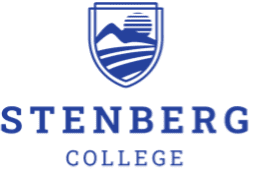Medical imaging refers to a wide range of techniques that provide medical professionals with a better look at the human body. Medical imaging is crucial because it offers a range of non-invasive methods of accessing internal body structures, without having to operate. Doctors use medical imaging to see, diagnose, treat and cure patients.
Students pursuing hospital support specialist training will soon learn all about the various medical imaging techniques that exist today, as they will need to be familiar with such methods once they begin their careers. Read on to learn about the most popular medical imaging devices, and their applications.
X-Ray
Most people have heard of X-rays, and know that they are simple tests that generate images of the body’s bones. X-rays use beams, which are absorbed by all of the different organs and systems of the body. The density or bulkiness of each body part (organs, bones, etc.) determines how it will appear on the X-ray image. For example, bones are very thick, so they absorb more X-ray beams and appear bright and white on X-rays. However, lungs, which are hollow and fairly thin absorb very little beams and appear black on X-ray images.
X-rays can be used to get a better look into many parts of the body. Doctors will generally use X-rays to diagnose fractures and infections, dental decay, osteoporosis, chest abnormalities, and even digestive tract issues.
Computer-Assisted Tomography (CAT Scan)
CT or CAT scans are specific types of X-ray tests that produce cross-sectional images of inside the body. Two-dimensional CT or CAT scan images can also be combined to create 3D images, and these can provide much more information than a standard X-ray can. While a CT scan can be used for a wide range of medical conditions, medical professionals—like those holding nursing unit diplomas—know that a CT scan’s primary use is to examine individuals who might have internal injuries due to physical accidents.
Patients will usually have a CAT scan so that doctors can better diagnose bone fractures, locate tumours or blood clots, and even detect diseases such as cancer and heart disease.
Magnetic Resonance Imaging (MRI)
Magnetic resonance imaging (MRI) is a medical imaging technique, which uses a magnetic field and radio waves to create detailed images of the organs and tissues within the human body. Individuals enrolled in nursing courses or nursing unit clerk training will know that MRIs use a magnetic field to realign the hydrogen atoms in the patient’s body for a given period of time. Radio frequency allows the aligned atoms to produce signals, and these signals create two-dimensional images of the body.
MRIs serve as a non-invasive way of examining a patient’s organs, tissues and bones. Doctors will typically send patients for MRIs to help diagnose a wide range of medical conditions including brain aneurysms, tumors, arthritis, bone infections, and breast cancer.
Ultrasound
An ultrasound is a technique which uses high-frequency sound waves to generate images from inside the body. Ultrasounds can be performed by using a sonar device on the body’s exterior, or by placing the device inside the body. While this method of medical imaging is most commonly known for providing expecting parents with glimpses of their baby, ultrasounds can also be used to diagnose several diseases and medical conditions, such as gallbladder disease and breast lumps.
What other uses are there for medical imaging technology?









